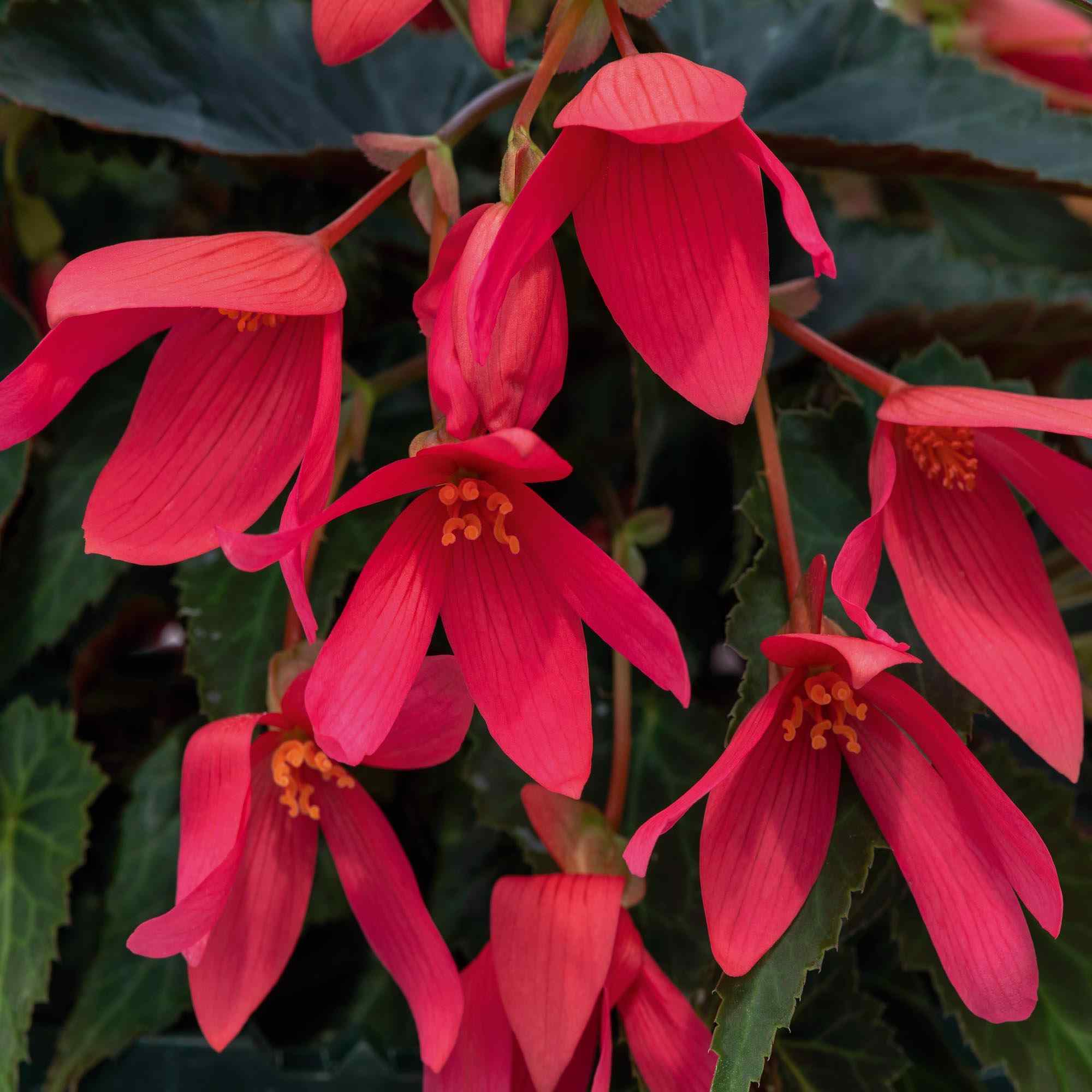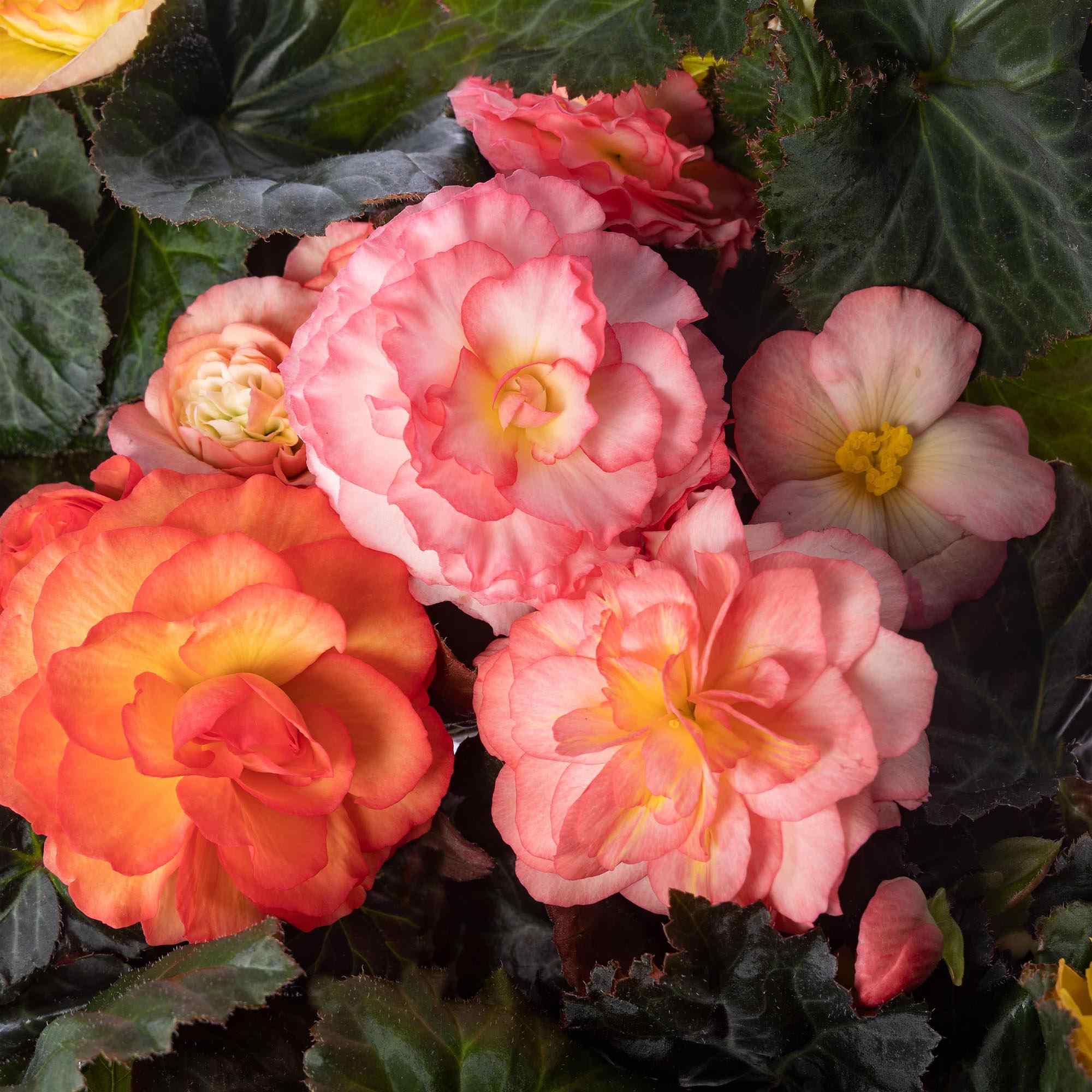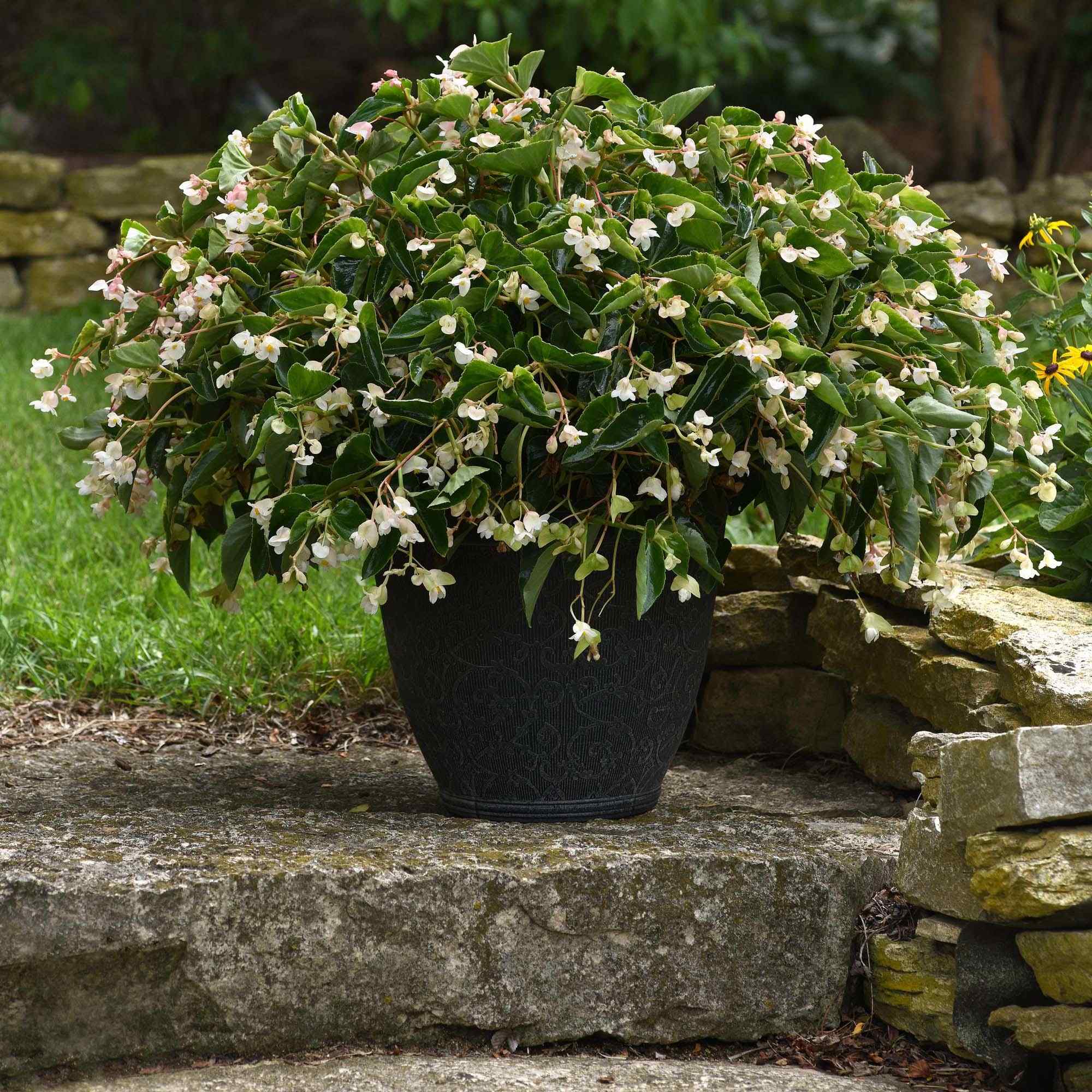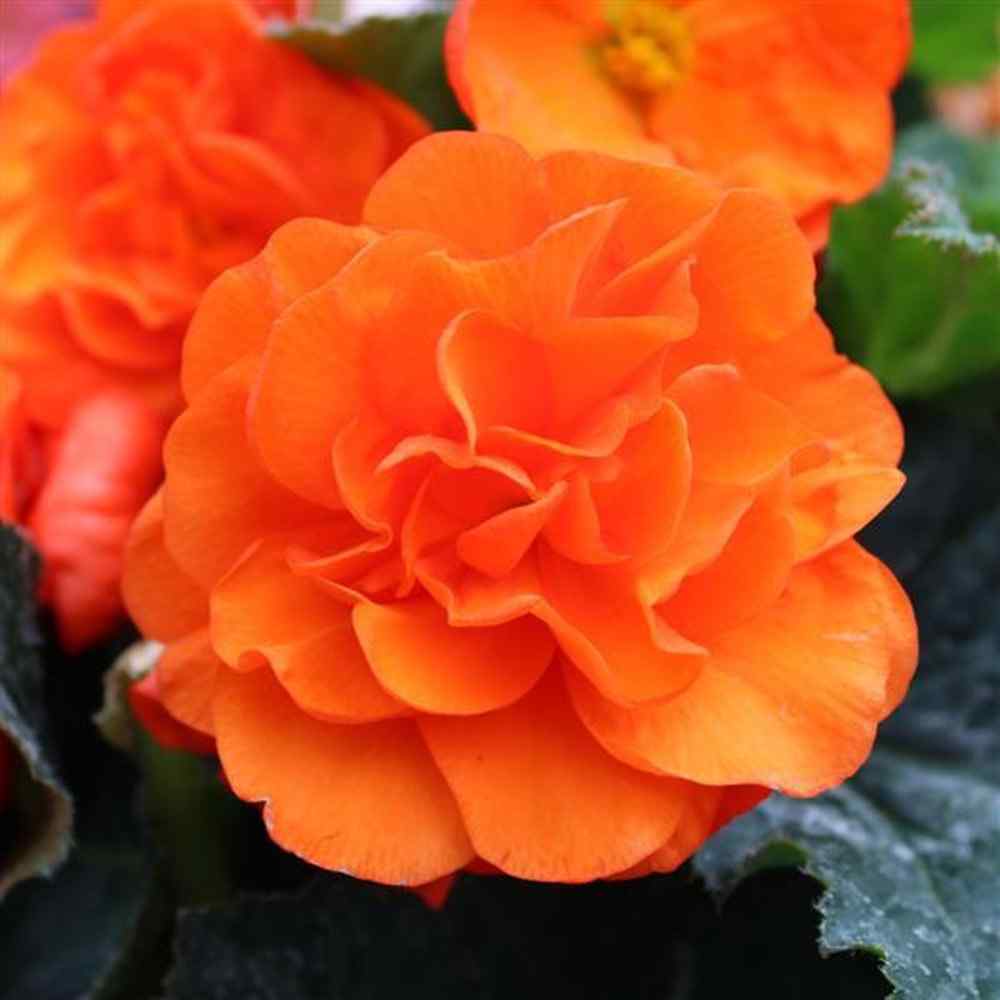
Begonia Planting Guide
Quick Facts About Begonia
Begonia's are beautiful plants for borders, containers and hanging baskets. They are showy plants that do well in partial shade and are deer resistant.
Planting Time
Begonia may be grown from seed sown early indoors 3 months before last frost.

Planting Location
Begonia's can be planted in full sun to shade depending on variety.
How to Plant Begonia
- Suraface sow 2 - 3 seeds per cell starting mix and press onto soil as seeds need light to germinate.
- Keep the soil moist with a mist sprayer at 70-75 degrees. Begonias can benefit with bottom heat.
- Germination should occur in 15 - 21 days.
- As soon as seedlings emerge, provide plenty of light on a sunny windowsill or grow seedlings 3-4 inches beneath fluorescent plant lights turned on 16 hours per day, off for 8 hours at night. Raise the lights as the plants grow taller. Incandescent bulbs will not work for this process because they will get too hot. Most plants require a dark period to grow, do not leave lights on for 24 hours.
- Thin to one seedling per cell when they have two sets of leaves. Seeds are tiny but plants grow quickly.
- Seedlings do not need much fertilizer, feed when they are 3-4 weeks old using a starter solution (half strength of a complete indoor houseplant food) according to manufacturer’s directions.
- For a more bushy plant pinch the top of the plant off when it has 6-8 leaves.
- Transplant hardened-off seedlings to the garden after all danger of frost.
- Before planting in the garden, seedling plants need to be “hardened off”. Accustom young plants to outdoor conditions by moving them to a sheltered place outside for a week. Be sure to protect them from wind and hot sun at first. If frost threatens at night, cover or bring containers indoors, then take them out again in the morning. This hardening off process toughens the plant’s cell structure and reduces transplant shock and scalding.

Care And Maintenance
- Keep weeds under control during the growing season. Weeds compete with plants for water, space and nutrients, so control them by either cultivating often or use a mulch to prevent their seeds from germinating.
- Mulches help retain soil moisture and maintain even soil temperatures. For annuals an organic mulch of shredded leaves lends a natural look to the bed and will improve the soil as it breaks down in time. Always keep mulches off a plant’s stems to prevent possible rot.
- Keep plants moist but not wet during the growing season, especially during dry spells. Plants need about 1 inch of rain per week during the growing season. Use a rain gauge to check to see if you need to add water. It's best to water with a drip or trickle system that delivers water at low pressure at the soil level. If you water with overhead sprinklers, water early in the day so the foliage has time to dry off before evening, to minimize disease problems. For Tuberous begonias try not to wet the leaves and flowers. Keep the soil moist but not saturated.
- Until plants are mature, some protection from extreme winds and direct, hot sunlight may be necessary. Good air movement is also important for healthy plants.
- After new growth appears, you may use a light fertilizer. If using granular keep away from plant crown and foliage to avoid burning the plant. Use low rates of a slow release fertilizer, as higher rates may encourage root rot.
- Deadhead throughout the season.
- Remove plants after they die due to frost in the fall to avoid disease issues the following year.




































